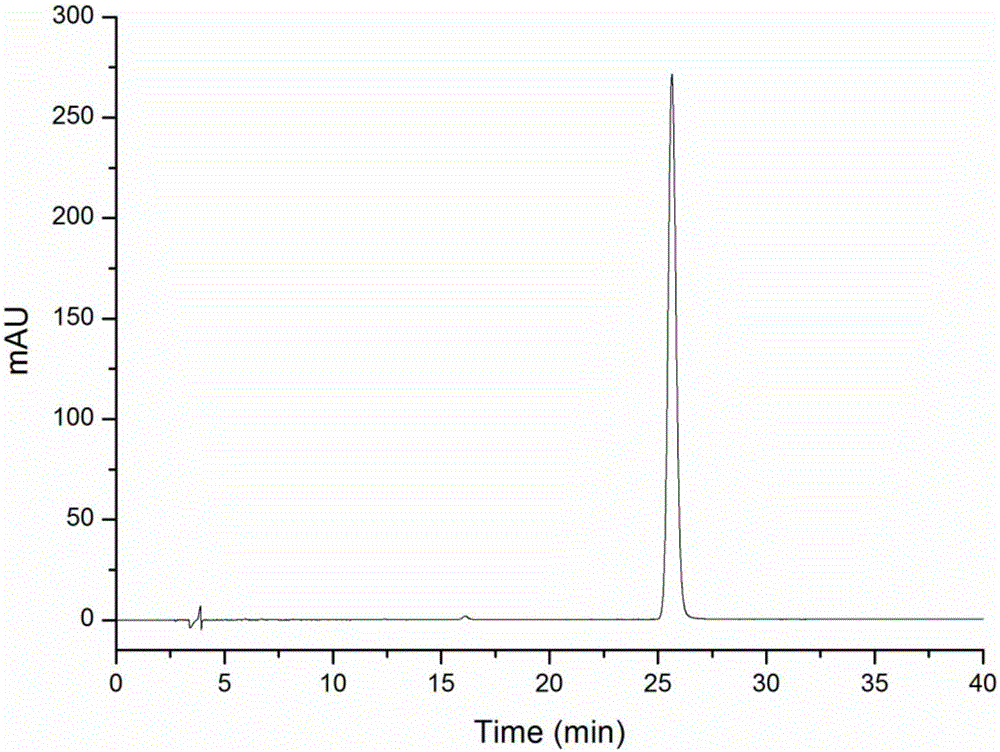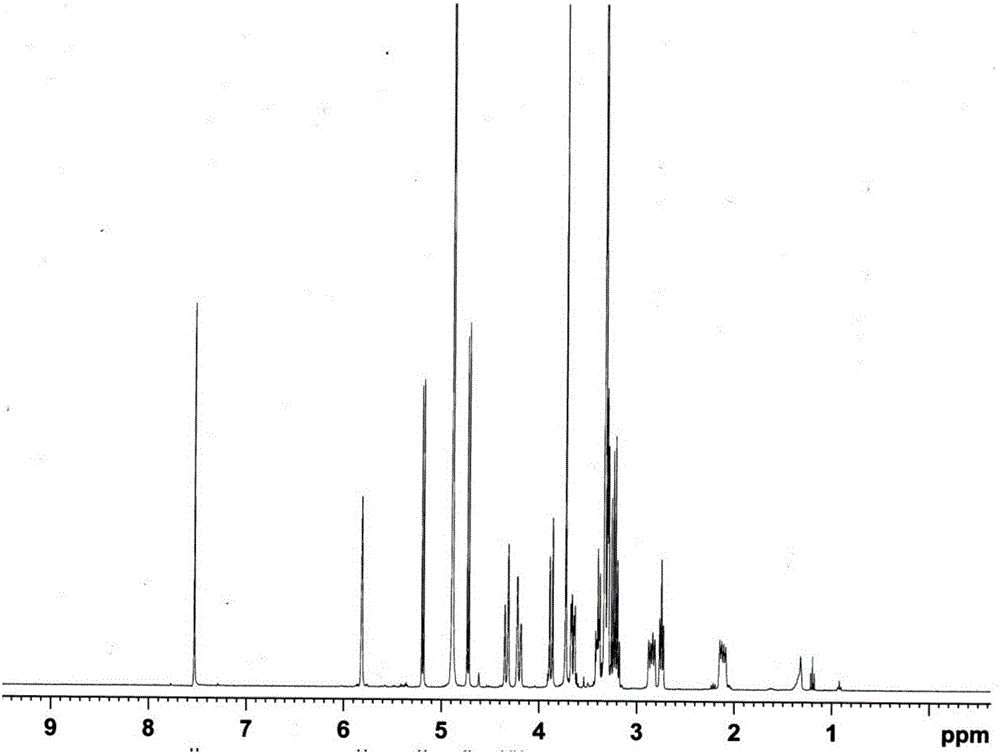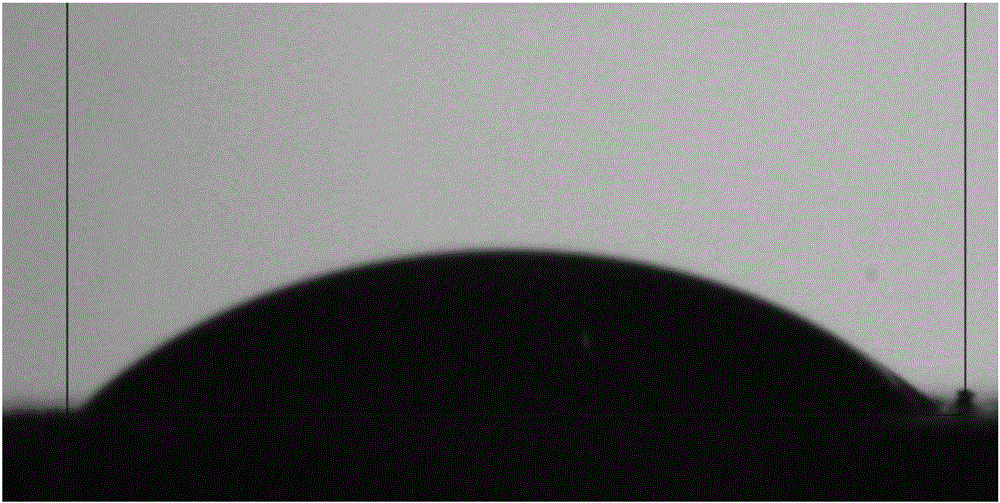Geniposide-rich hydrophilic molecularly imprinted polymer, preparation method and application
A technology of geniposide and molecular imprinting, which is applied in the field of separation to achieve effects of reduced impact, easy operation, and good application prospects
- Summary
- Abstract
- Description
- Claims
- Application Information
AI Technical Summary
Problems solved by technology
Method used
Image
Examples
preparation example Construction
[0032] Preparation of hydrophilic geniposide molecularly imprinted polymers:
[0033] (1) material preparation
[0034] Each raw material component is formulated according to the following dosage ratio: template molecule geniposide 0.91g, alkenyl glycoside glucose (R 1 =OH,R 2 =OH) 1.98g, crosslinking agent N,N-methylenebisacrylamide 16.17g, initiator azobisisobutyronitrile 0.08g, pore forming agent deionized water 55.31g;
[0035] (2) Preparation of molecularly imprinted polymers with template molecules
[0036]Add the above prepared geniposide, alkenyl glycoside glucose, N,N-methylenebisacrylamide, azobisisobutyronitrile, and deionized water into the reaction kettle and mix evenly, ultrasonically degas for 15 minutes, and then Fill with nitrogen and deoxygenate for 15 minutes, seal and polymerize in a constant temperature oil bath at 60°C for 24 hours to obtain a polymer with template molecules;
[0037] (3) Preparation of molecularly imprinted polymers that remove templ...
Embodiment 2
[0042] Preparation of hydrophilic geniposide molecularly imprinted polymers:
[0043] Each raw material component is formulated according to the following dosage ratio: template molecule geniposide 0.99g, alkenyl glycoside glucose (R 1 =OH,R 2 =OCOCH 3 ) 2.11g, crosslinking agent N,N-methylenebisacrylamide 17.26g, initiator azobisisobutyronitrile 0.09g, pore forming agent deionized water 55.47g. The preparation process of the molecular imprinted polymer was the same as that in Example 1, and finally 18.3 g of the molecularly imprinted polymer was obtained. Its hydrophilicity was measured by contact angle test, and the contact angle was 47 degrees, indicating that it was hydrophilic.
[0044] Application of hydrophilic geniposide molecularly imprinted polymers in the purification and enrichment of geniposide:
[0045] Take 10 g of the molecularly imprinted polymer prepared in this example and pack it into a column, weigh 10 g of Gardenia jasmine, crush it, add 250 mL of dei...
Embodiment 3
[0047] Preparation of hydrophilic geniposide molecularly imprinted polymers:
[0048] Each raw material component is formulated according to the following dosage ratio: template molecule geniposide 1.03g, alkenyl glycoside glucose (R 1 =OH,R 2 =OCOCH=CH 2 ) 2.22g, crosslinking agent N,N-methylenebisacrylamide 16.26g, initiator azobisisovaleronitrile 0.10g, pore forming agent deionized water 53.33g. The process of preparing molecularly imprinted polymers was the same as that in Example 1, and finally 19.7 g of molecularly imprinted polymers were obtained. The hydrophilicity was measured by the contact angle test, and the contact angle was 41 degrees, indicating that it was hydrophilic.
[0049] Application of hydrophilic geniposide molecularly imprinted polymers in the purification and enrichment of geniposide:
[0050] Take 10 g of the molecularly imprinted polymer prepared in this example and pack it into a column, weigh 10 g of Gardenia jasmine, crush it, add 250 mL of d...
PUM
 Login to View More
Login to View More Abstract
Description
Claims
Application Information
 Login to View More
Login to View More - R&D
- Intellectual Property
- Life Sciences
- Materials
- Tech Scout
- Unparalleled Data Quality
- Higher Quality Content
- 60% Fewer Hallucinations
Browse by: Latest US Patents, China's latest patents, Technical Efficacy Thesaurus, Application Domain, Technology Topic, Popular Technical Reports.
© 2025 PatSnap. All rights reserved.Legal|Privacy policy|Modern Slavery Act Transparency Statement|Sitemap|About US| Contact US: help@patsnap.com



